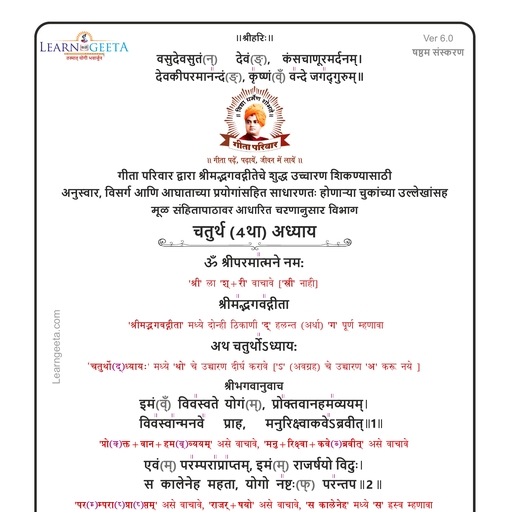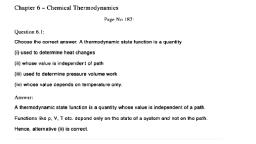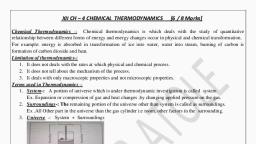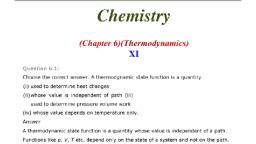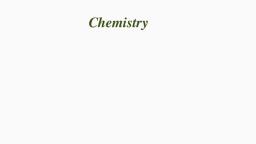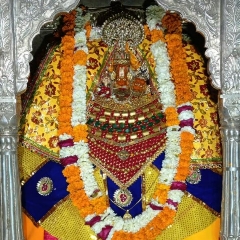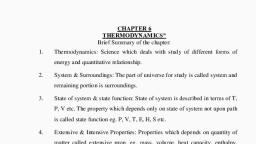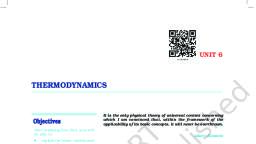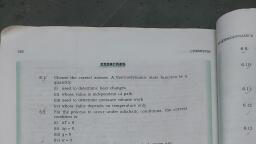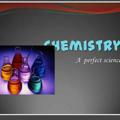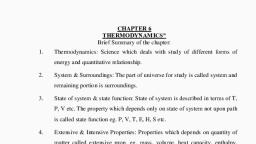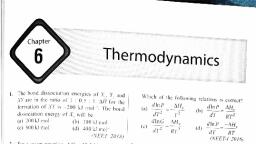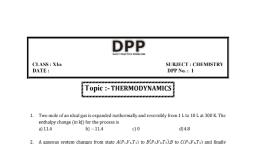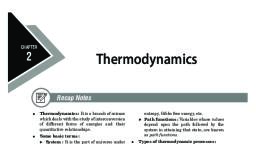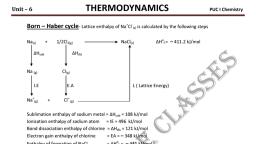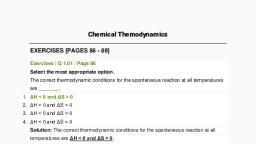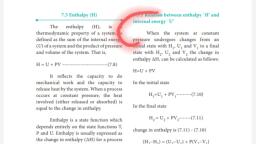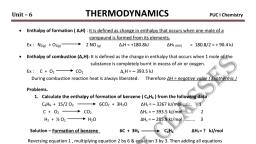Page 1 :
ee Lt FULLY SOLVED , 1, Choose the correct answer., Qt A thermodynamic state function is a quantity, (i) used to determine heat changes, (iii) used to determine pressure volume work, As. (ii) is the correct answer., Q.2. For the process to occur under adiabatic conditions,, fi) AT =0, (ii) q=0, Ans. {iii) is the correct answer., 0.3 The enthalpies of all elements in their standard States are :, ()_ unity, (iii) < 0, ‘Ans, (ii) is the cotrect answer., Q.4, AU® of combustion of methane is - X kJ mol“. The value of AH® is, @ =au® (ii) > AU®, (iii) < AU? (iv) 0, Ans, The balanced chemical equation for the combustion reaction is :, CH4(g) + 20, (g) —> COn(g) + 2H20 (1), A’ =1-3=-2, AH® = AU® + A”’RT = AUS - 2RT, +“. AH® < AU® or (iii) is the correct answer., , Q.5, The enthalpy of combustion of methane, graphite and dihydrogen at 298 K are - 890-3 kJ mol!, -393-5 kJ mol! and, ~ 285-8 kJ mol"! respectively. Enthalpy of formation of CH, (g) will be, , (ii) whose value is independent of path, (iv) whose yalue depends on temperature only., , the correct condition is :, (ii) Ap =0, (ivy) w=0, , (ii) zero, (iv) different for each element, , (i) -748kS mot (ii) -52-27 kJ mol!, , (iii) + 74-8 kJ mol“! (iv) + 52:26 kJ mol!, Ans, According to available data :, , @ CH4(g) + 202(g) —> COp(g) + 2 H20(l) ; AH® = - 890-3 kJ mol!, , Cn ail C(s) + Op (g) —> CO2(g); ACH = ~ 393-5 KI mot"!, , (iii) Hy(g) + 1/20, (g) —> H,0 () ; A-H® = - 285-8 kJ mo, , The equation we aim at :, , C(s) + 2H2(g) —> CHy(g) ; AHS = ?, Eqn. (ii) + 2x Eqn. (iii) - Eqn (i) and the correct AfH® value is :, ‘. = (—393:5) +2 x (-285-8)-(-890:3) = - 74-8 kJ mol., “(is the correct answer.
Page 2 :
Q. 6. A reaction, A + B + C + D + q is found to have a positive entropy change. The reaction will be, (i) possible at high temperature (ii) possible only at low temperature, (iii) not possible at any temperature (iv) possible at any temperature, , Ans. (iv) is the correct answer., , Q.7. Ina process, 701 J of heat is absorbed by a system and 394 J of work is done by the system. What is the Chang, in internal energy for the process ?, , Ans, Heat absorbed by the system, g = 701 J, Work done by the syst =-304), Change in internal energy (AU) = g + w = 701 - 394 = 307 J., , Q. 8, The reaction of cyanamide, NHCN(s) with oxygen was affected in a bomb calorimeter and AU was found to,, , ~ 742-7 kJ mol" of cyanamide at 298 K. Calculate the enthalpy change for the reaction at 298 K., , NHZCN(s) + 3/202(g) —> N2(g) + CO2(g) + H,0(), ‘Ans, AU = -742:7J mol ; A’ = 2 - 3/2 = + 1/2 mol., R = 8-314 x 107k K+ mol ; T = 298K, According to the relation, AH = AU + A’8RT, AH = (- 742:7 kJ) + (1/2 mol) x (8314 x 10 kJ K-! mol"!) x (298 K), = ~ 742-7 kJ + 1:239kJ = - 741-5 kJ., , Q. 9, Calculate the number of kJ necessary to raise the temperature of 60 g of aluminium from 35 to 55°C. Molar heat, , capacity of Al is 24 J mol K+., , (60 g), (27g mol’), Molar heat capacity (C) =,24J mol! K"!, Rise in temperature (AT) = 55-35 = 20°C = 20K 0 ten, Heat evolved (q) = C x m x T = (24J mol"! K") x (2+ 22, mol) x OOK, = 1065-6 J = 1-067 kJ., Q. 10, Calculate the enthalpy change on freezing of 1-0 mol of water at - 10° °c to ice tha = 10:0°C. AjsH =, 6-03 kJ mol" at 0°C. C,[H20()] = 75:3 I mol! K* ; C,[H20(s)] = 368 5 mor! Kh, ‘Ans. The change may be represented as : :, , Ans. * No. of moles of Al(m) = = 2:22 mol, , AH, H,0()) (-10°C) —> H,0(5) (-10°C), , [om or fox, , AH, H,0()) (0°C) —— H30(5) (0°C), According to Hess's Law ; AH = AH, + AH; + AH3, , AH, = 75:3 mol K-"(10 K) = 753 Fok eae ia aan, ao ie ten eae thy :, AH) (solidification) = - 603 I mol! = - 6030 J mol"! c 4 : f, ; : ta ws, (sign changed), , AH; = 36°8J mol"! K-(- 10 K) = -36:8 J mol?, AH = (753 - 6030 - 368) J mol! = - 5645 J mol"! =, , Enthalpy ‘of combustion of carbon to carbon dioxide is - 393-5 kJ me, , , , , e the heat released upon, , Q. 1. mation of 35:2 g of CO; from carbon and oxygen £88: poy ,, combustion equation is : comps , ‘ ¥ ot, a as es) One A atin”, “wo + wills, , Heat released in the formation of 44g of CO2 = 993'5.10 0. dh dito Pel oer ee |, fa, (393-5 kJ) x (35-28) ;, eased sara ot cO, = = 368,, , Heat rel
Page 4 :
Ans,, , Ans,, , Q. 21., , According to Gibbs-Helmholtz equation :, AG = AH- TAS, , For, AG =0; AH = TASorT=, , (400 kJ mol” My, (0-2k}K™ Tol!), Thus, reaction will be ina state of equilibrium at 2000 K and will, For the reaction ; 2Cl(g) —> Clz(g) ; what will be the signs of A, AH : negative (-ve) because energy is released in bond formation, AS : negative (-ve) because entropy decreases when atoms combine t, For a reaction ; 2A(g) + B(g) —> 2D(g), AU, 9, = - 10:5 kJ and AS@ = - 44-1 JK+, , = 2000K, , T=, be spontaneous above this temperature., , H and AS?, , 0 form molecules:, , Calculate AU,,, for the reaction and predict whether the reaction is spontaneous or not., , AH® = AU® + ART, AU® = - 10-5 kJ ; A" = 2-3 =- 1 mol, = 8:314 x 103k) K! mol; T = 298 K, AHO = (10-5 kJ) + [C1 mol) x (8314 x 10°, =~ 10°5'kJ 2-478 kJ = - 12:978, , 3 xy K-! mol!) x (298 K)], , According to Gibbs Helmholtz equation :, AG® = AH®- TAS?, AG® = 12-978 kJ) - (298 K, = - 12-978 + 13-112 =, the reaction js non-spontaneous in na, for the reaction is 10. Calculate, , ) x (00441 KI K), , _ 12-978 + 13:142 = 0-164 kJ., Since AG® is positive, ture., , The equilibrium constant the value of AG® ; given, R = 8JK~ mol" ; T = 300K. ‘, , AGO = - RT In K' + ~=2:303 RT log K., R = 80K? moll; T= 300 K ; K = 10, AG® = - 2-303 x (8IK*? mol") x (300 K) X log 10, _ 5527 Jmol? = = 5527 kJ mol., Comment on the thermodynamic stability of NO(g) and NO2(g) given :, , H® = 90 kJ mot*, , 1/2Ny(g) + 1/202(g) —> NO(e) 3A, = -74kJ mol!, , NO(e) + 1/203(g) —> NOx(g) + AH®, For NO(g) ; A,H® = +ve: Unstable in nature, For NOz(g) ; ArH® = - ve: Stable in nature, Calculate the entropy change in surroundings when 1-0 mol of Hj,O() is formed under standard conditions. Gi", perma, 1, , dua = © AH®) = 286 KI mot! = 286000 J mol!, , — Gray = (286000 J mol, AS(surrounding) ~~ T {288000 or = 959 J K+ molt,, , $i 19 adebortl ~~
Page 5 :
F, , , , OAR h la an Re, , MULTIPLE CHOICE QUESTIONS (TYPE-D), , Single Correct Option, 4. Thermodynamics is not concerned about, (a) energy changes involved in a chemical reaction., (6) the extent to which a chemical reaction proceeds., (c) the rate at which a reaction proceeds, (d) the feasibility of a chemical reaction., 2. Which of the following statements is correct ?, (a) The presence. of reacting species in a covered beaker, is an example of open system,, (b) There is an exchange of energy as well as matter between, the system and the surroundings in a closed system., (c) The presence of reactants in a closed vessel made, up of copper is an example of a closed system., , d) The presence of reactants.in a thermos flask or any, other closed insulated vessel is an example of a, closed system., , 3. The state of a gas can be described by quoting the, relationship between, (a) pressure, volume, temperature, (b) temperature, amount, pressure, (c) amount, volume, temperature, (qd) pressure, volume, temperature, amount., 4. The volume of gas is reduced to hali from its original, volume. The specific heat will, (a) be reduced to half (b) be doubled, (c) remain constant (d) increase four times., , 5. During complete combustion of one mole of butane,, 2658 kJ of heat is released. The thermochemical reaction, , for the above change is :, , (@) 2C4Hyo(g) + 1302(9) —— 8 CO2(g), + 10H20(/) ; AcH = — 2658.0 kJ mol, , (6) CaHy0(g) + 13/2 02 ——> 4 CO,(g), + 5H20 (g); AcH = — 1329-0 kJ mor!, , (c) C4Hyo(9) + 13/202(9) ——> 4 CO2(g), + 5H2O(); AcH = - 2658-0 kJ mol, , (@ C4Hio(g) + 13/202(9) ——> 4C02(9), + 5H,O(); AH = + 2658-0 kJ mol., , 6. AWU® of formation of CH,(g) at certain temperature is, , -393 kJ mol’. The value of AH? is, , (a) zero (0) < Aw?, , (9 > ape (0) equal to AUUe, , 7. in an adiabatic process, no transfer of heat takes place, between and surroundings. Choose the correct, , option for free expansion of an ideal gas under adiabatic, condition from the following :, (4)q=0, AT #0,w=0 (b)q#0,AT=0,w=0, (9.q=0,AT =0,w=0 (d)q=0,AT<0,w#0, 8. The pressure-volume work for an ideal gas can be, uf, , calculated by using the expression w=-| PoxdV. The, ¥/, , work can also be calculated from the pV-plot by using the, area under the curve within the specified limits. When an, , , , ideal gas is compressed (a) reversibly or (b) irreversibly, from volume Vj to V;, choose the correct option., (a) w (reversible) = w (irreversible), (b) w (reversible) < w (irreversible), (c) w (reversible) > w (irreversible), (d) w (reversible) = w (irreversible) + Pex. AV, 9. The entropy change can be calculated by using the, , expression AS = ie, When water freezes in a glass, , beaker, choose the correct statement amongst the, , following : ,, (a) AS (system) decreases but AS (surroundings) remains, , the same, (b) AS (system) increases but AS (surroundings) decreases., (c) AS (system) decreases but AS (surroundings) increases., (d) AS (system) decreases and AS (surroundings) also, decreases., , 40. On the basis of thermochemical equations (/), (ii) and (ii),, find out which of the algebraic relationships given in, options (i) to (iv) is correct., , (9. C (graphite) + O2(g) ——> CO2(g) ; AH = xkJ mol, , (i C (graphite) + Oz(a) ——> CO(G); AH = ykJ mor, , (ii) CO (g) + 3029) ——> €02(g) ; AH = zkJ mol, , (a)z=x+y (b) x=y-Z, ()x=y+z (@) y=2z-x, 11. Consider the given reactions. On the basis of these, reactions find out which of the algebraic relations given, in options (i) to (iv) is correct ?, () C(g) +4. H (g) ——> CH4(g) ; 4H = xkJ mort, (i) C (graphite,s) + 2H2 (g) ——> CHa(g), AH = ykJ mol, (a) x=y (b) x=2y, (Qx>y (x<y, 12. The enthalpies of elements in their standard states are, taken as zero. The enthalpy of formation of a compound, (a) is always negative, (b) is always positive, (c) may be positive or negative, (q) is never negative, 13. Enthalpy of sublimation of a substance is equal to, (a) enthalpy of fusion + ethalpy of vaporisation, (b) enthalpy of fusion, (c) enthalpy of vaporisation, (d) twice the enthalpy of vaporisation, , 14. Which of the following is not correct ?, , (a) AG is zero for a reversible reaction, , ie AG Is positive for a spontaneous reaction, , ¢) AG Is negative for a spontaneous reaction, (qd) AG is positive for a non-spontaneous reaction.



